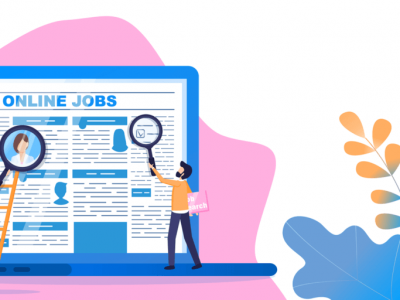Introduction
For organizations looking to maintain their competitiveness and efficacy in the always changing world of technology, staying ahead of the curve is crucial.
IT outsourcing has been a crucial tactic for businesses trying to capitalize on outside expertise and cost efficiency.
As we approach 2024, it’s crucial to take a closer look at the future of IT outsourcing trends and how they will impact businesses.
In this blog post, we’ll explore the key trends that are expected to shape the IT outsourcing landscape in the coming years.
1. Embracing Advanced Technologies
With the year 2024 on the horizon, the integration of advanced technologies into IT Outsourcing is set to continue its ascent.
Businesses will increasingly seek outsourcing partners with expertise in emerging technologies such as artificial intelligence (AI), machine learning, and blockchain.
Artificial Intelligence (AI): AI-powered solutions will become more prevalent in IT outsourcing. AI will increase effectiveness and decision accuracy in everything from chatbots for customer service to predictive analytics.
Machine Learning (ML): ML algorithms will be used for data analysis, pattern recognition, and personalization. Businesses will harness ML to optimize supply chains, improve customer experiences, and automate repetitive tasks.
Blockchain: The adoption of blockchain technology in IT outsourcing will provide enhanced data security and transparency. If you have a strong team as contracts while you are doing blockchain project, it will always automate processes and reduce fraud risks.
2. Hybrid Models of Outsourcing
As businesses seek greater flexibility and control over their IT operations, hybrid outsourcing models are expected to gain prominence.
These models combine in-house IT resources with outsourced capabilities, offering a more adaptable approach to technology management.
Benefits:
- Scalability and Agility: Businesses can scale their IT resources up or down as needed, responding quickly to changing market dynamics.
- Cost Optimization: By maintaining core functions in-house and outsourcing non-core activities, companies can optimize costs.
- Risk Management: Diversifying IT resources across in-house and external teams can reduce the risk of downtime and disruptions.
3. Focus on Cybersecurity and Data Privacy
With the increasing frequency of cyber threats and stricter data protection regulations, cybersecurity will remain a top priority for businesses in 2024 and beyond.
Data security and compliance will require a strong commitment from IT outsourcing companies.
Key considerations include:
- Investing in Strong Cybersecurity Measures: To protect sensitive data, use strong security protocols, encryption, and frequent security updates.
- Regulatory Compliance: Making sure that national and international data protection laws, such as the CCPA and GDPR, are followed in order to avoid penalties.
- Conducting routine security audits and assessments to spot weaknesses and put changes into place.
4. Geographical Shifts in Outsourcing
The geographical landscape of IT outsourcing is expected to witness changes. While traditional outsourcing destinations like India will remain strong, nearshore and onshore options will gain popularity, offering advantages like better time zone alignment, cultural proximity, and reduced travel costs.
Considerations for businesses include:
- Evaluating the Benefits: Assessing the benefits of nearshore and onshore outsourcing for specific projects based on factors such as language proficiency, time zone compatibility, and cultural alignment.
- Communication and Collaboration: Evaluating the potential impact on communication and collaboration when working with teams in different regions.
- Legal and Regulatory Aspects: Navigating the legal and regulatory aspects of outsourcing to different regions, including data protection and intellectual property rights.
5. Enhanced Collaboration and Communication Tools
Effective communication and collaboration between clients and outsourcing partners are critical for project success.
In 2024, the use of advanced communication tools and platforms will be pivotal in bridging geographical gaps and ensuring seamless interactions.
Tools to watch for:
- Project Management and Collaboration Platforms: Tools like Slack, Trello, and Asana will continue to facilitate real-time collaboration, task management, and project tracking.
- Video Conferencing and Virtual Collaboration Solutions: Platforms like Zoom, Microsoft Teams, and Google Meet will be essential for virtual meetings, webinars, and team discussions.
- Real-time Data Sharing and Analytics Dashboards: Data-driven decision-making will rely on platforms that enable real-time data sharing and analysis, providing insights for improved strategies and outcomes.
Conclusion
As we look ahead to 2024 and beyond, the IT outsourcing landscape is poised for transformation. Businesses that adapt to these trends and leverage the expertise of their outsourcing partners will gain a competitive edge.
Embracing advanced technologies, exploring hybrid outsourcing models, prioritizing cybersecurity, considering geographical shifts, and investing in collaboration tools will be essential for success in the dynamic world of IT outsourcing.
Are you ready to embrace the future of IT outsourcing services and harness its full potential for your business? Stay informed and stay ahead – contact IT consulting services provider now.


















Comments